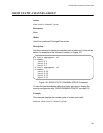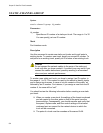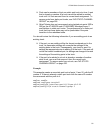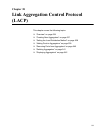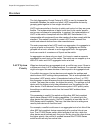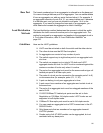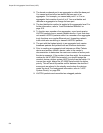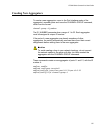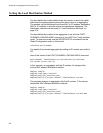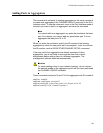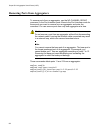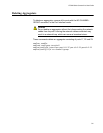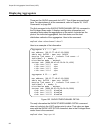Chapter 38: Link Aggregation Control Protocol (LACP)
536
The lowest numbered port in an aggregator is called the base port.
You cannot add ports that are below the base port of an
aggregator. For example, you cannot add ports 1 to 3 to an
aggregator that consists of ports 4 to 8. You must delete and
recreate an aggregator to change its base port.
The load distribution method is applied at the aggregator level. For
further information, refer to “Load Distribution Methods” on
page 516.
To function as a member of an aggregator, a port must receive
LACPDU packets from a remote network device. A port that does
not receive LACPDU packets while it is a member of an aggregate
trunk functions as a regular Ethernet port, forwarding network
traffic while also continuing to transmit LACPDU packets.
The port with the highest priority in an aggregate trunk carries
broadcast packets and packets with an unknown destination.
Prior to creating an aggregate trunk between an Allied Telesis
device and another vendor’s device, refer to the vendor’s
documentation to determine the maximum number of active ports
the device supports. If the number is less than eight, the maximum
number for the AT-9000 Series switch, you should assign the
vendor’s device a higher system LACP priority than the switch. If it
is more than eight, assign the AT-9000 Series switch the higher
priority. This will avoid a possible conflict between the devices if
some ports are placed in the standby mode when the devices
create the trunk. For background information, refer to “LACP
System Priority” on page 534.
LACPDU packets are transmitted as untagged packets.




